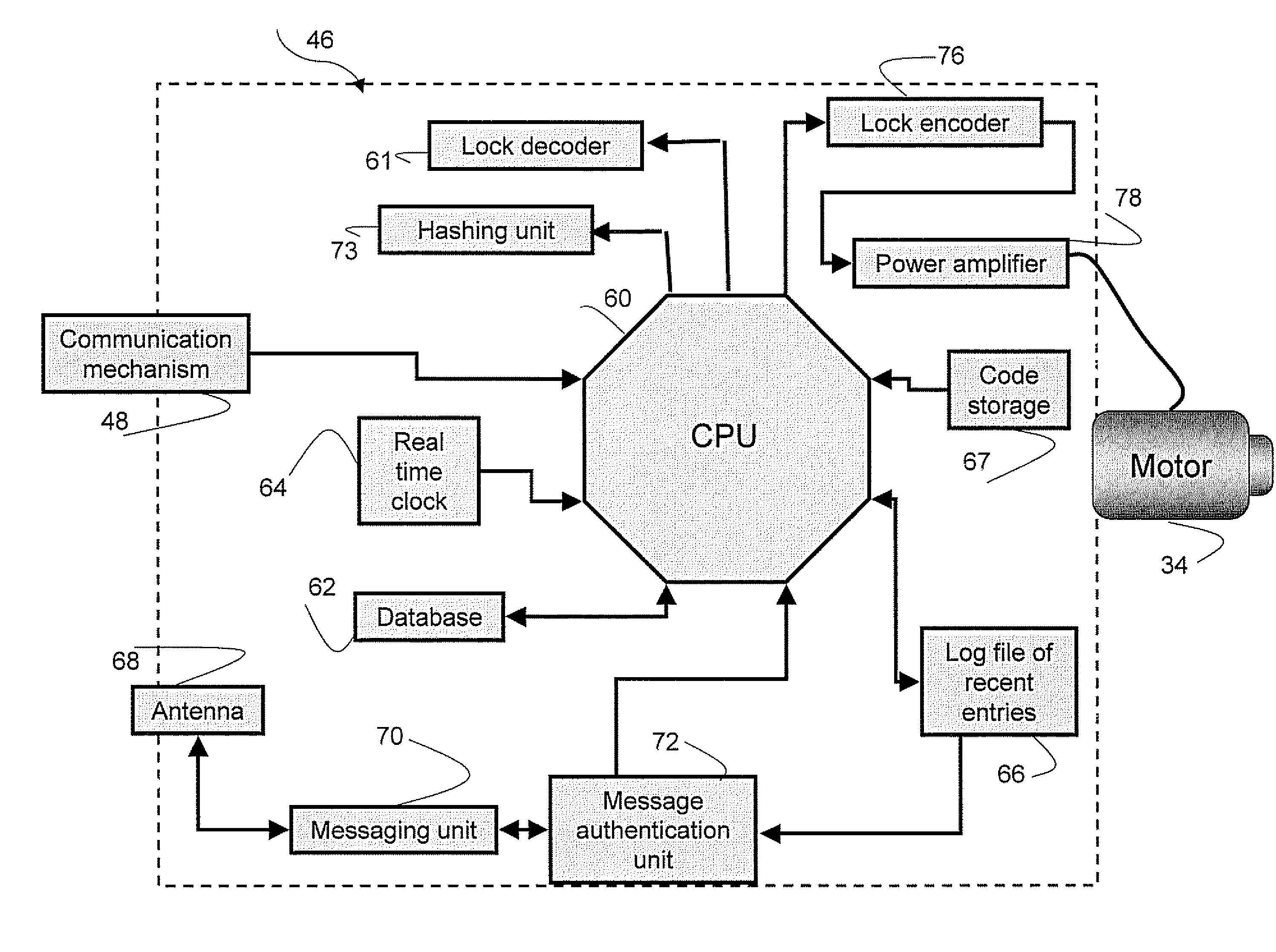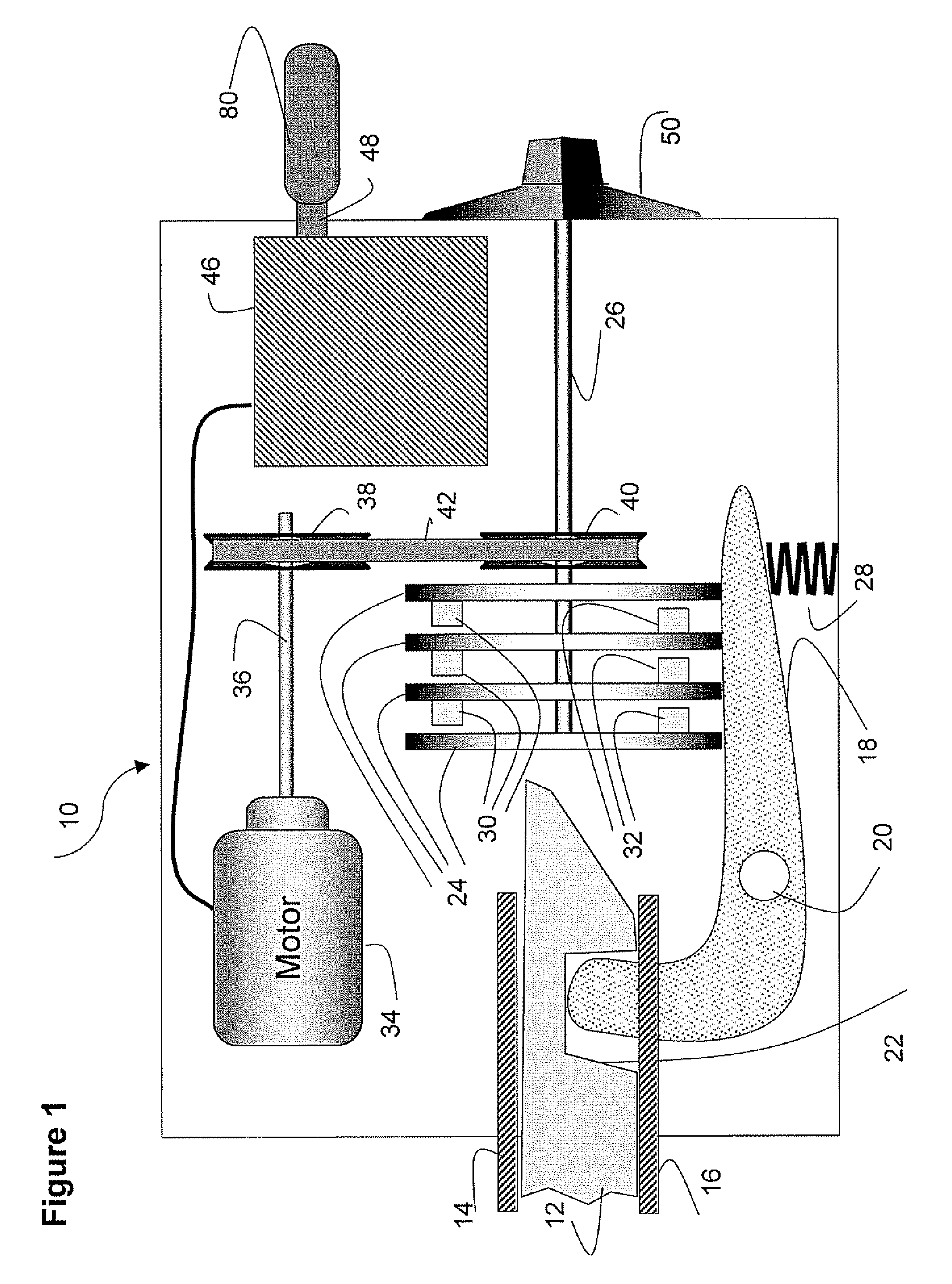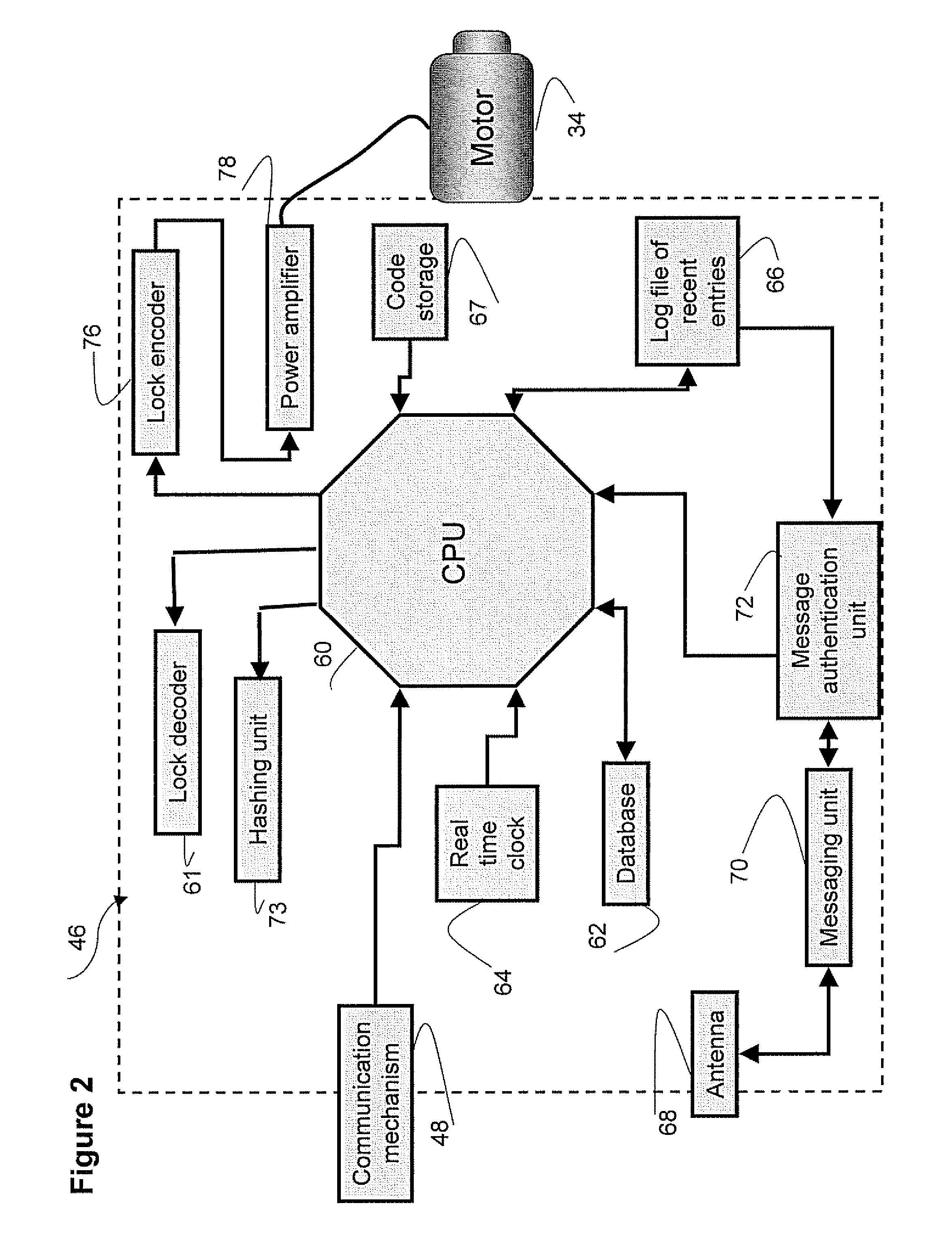Electromechanical Lock Device And Method
a technology of electronic mechanical locks and lock devices, applied in the field of electronic mechanical locks, can solve the problems of not being able to selectively deny a user, requiring manual dial movement, and prior art combination locks that cannot be operated automatically
- Summary
- Abstract
- Description
- Claims
- Application Information
AI Technical Summary
Benefits of technology
Problems solved by technology
Method used
Image
Examples
first embodiment
[0109] In accordance with the present invention, identification (ID) information of the user holding the token 80 is stored in a non-volatile storage area of a non-volatile memory 84. The key ID (such as a serial number) is stored in a Key ID unit 86. Upon the establishment of communication between a Key Controller 82 and the electromechanical lock device 10, the ID information and Key ID as well as the dial combination are sent to the Key Controller 82 and then, via key connector 90 (e.g. USB connector, Firewall connector, etc.), sent to the electromechanical lock device 10. The electromechanical lock device 10 then verifies the Key ID and the user's ID information received from the token against data stored in a database 62 and, assuming a match is found, uses the received dial combination to unlock as described herein above.
[0110] Clearly, if the dial combination stored in the token is not the dial combination pre-defined to open this specific electromechanical lock device, or th...
second embodiment
[0111] In the present invention, Key Controller 82 is provided to send the dial combination in two forms—one encrypted with a public key and the other hashed with the key ID. Upon the establishment of communication between token 80 and the electromechanical lock device 10, electromechanical lock device 10 receives the Key ID of the token, the encrypted dial combination and the hashed dial combination. The electromechanical lock device 10 then decrypts the encrypted dial combination (via Lock Decoder 61) using its private key and then hashes (via Hashing unit 73) the decrypted data using the Key ID received from the token.
[0112] In case the hashed decrypted data matches the hashed dial combination received from the token, the decrypted data is sent to manipulate motor 34 (via lock encoder 76) to open the lock. If the decrypted data is not the correct dial combination of the electromechanical lock device—then the decrypted data will not open the lock. In such case the token is most li...
PUM
 Login to View More
Login to View More Abstract
Description
Claims
Application Information
 Login to View More
Login to View More - R&D
- Intellectual Property
- Life Sciences
- Materials
- Tech Scout
- Unparalleled Data Quality
- Higher Quality Content
- 60% Fewer Hallucinations
Browse by: Latest US Patents, China's latest patents, Technical Efficacy Thesaurus, Application Domain, Technology Topic, Popular Technical Reports.
© 2025 PatSnap. All rights reserved.Legal|Privacy policy|Modern Slavery Act Transparency Statement|Sitemap|About US| Contact US: help@patsnap.com



